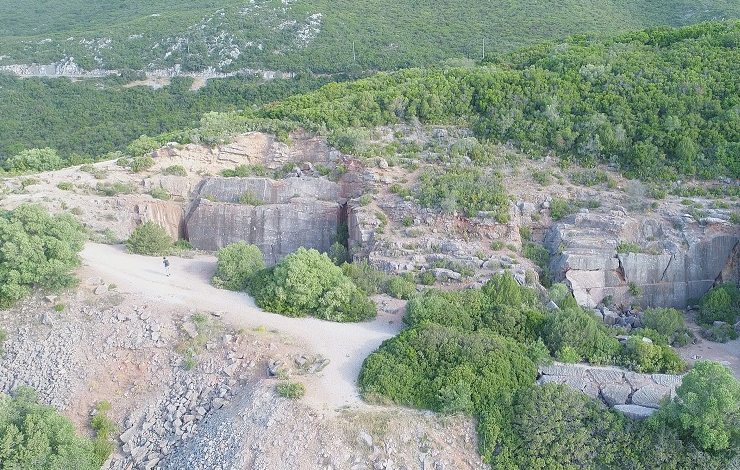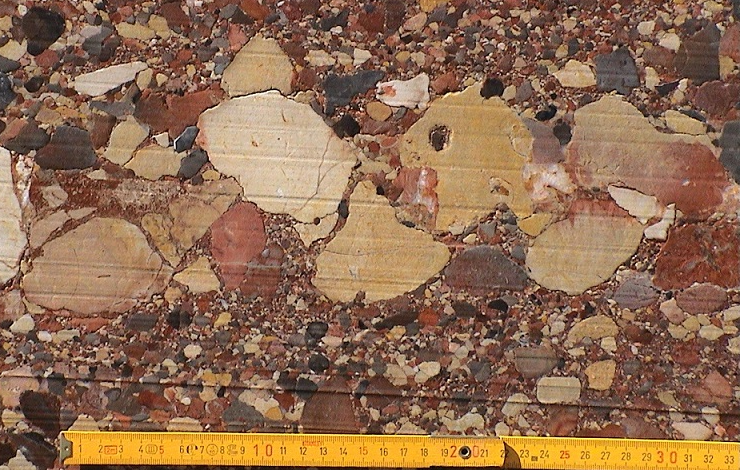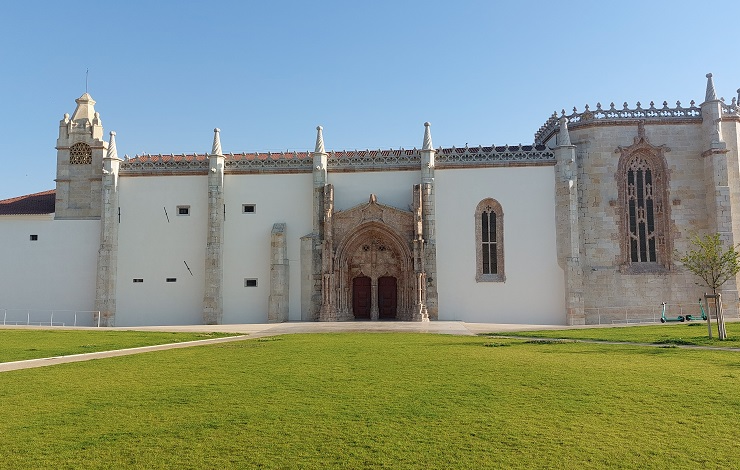31-03-2023

José Carlos Kullberg, Professor of the Department of Earth Sciences, and researcher of GeoBioTec at NOVA School of Science and Technology | FCT NOVA, led the group of researchers who have successfully conducted the classification of the “Brecha da Arrábida” as Heritage Stone. The classification was awarded last October by the Sub-Commission on Heritage Stones of the International Union of Geological Sciences (IUGS), partner of UNESCO for various issues related to Geosciences.
The historical importance and the architectural relevance of applications of “Brecha da Arrábida”, combined with its geological, educational and economic values, were key factors for the approval as Heritage Stone. The “Brecha da Arrábida” now joins the two stones that had previously achieved this status in Portugal, the Estremoz Marble and the Lioz Limestone, integrating a restricted group of 32 Heritage Stones worldwide.

Aspect of the "Brecha da Arrábida" in one front of the abandoned "Jasper" quarry.
A Heritage Stone (HS) is, according to the IUGS, “a natural stone that has been used in significant architecture and monuments, recognized as an integral part of human culture”; the “Brecha da Arrábida” perfectly fits into this definition. It has been exploited as structural stone since the Roman Period until the 15 th century, when it started to be use as an ornamental stone linked to the “Manueline Artistic Style” (a kind of Portuguese specific late gothic style) in the outdoors of the monuments and for the 17th century on, only for interiors purposes. In Portugal, from the 88 occurrences listed on the HS application, 65 refer to uses in classified Monuments, 24 of which are National Monuments, and some integrated in the UNESCO classifications. Several historical applications have already been listed in Monuments and notable buildings (e.g. the Jesus Monastery, 15th century, in Setúbal, in six countries besides Portugal, from three continents: Austria, France, Spain and United Kingdom, Brazil and Mozambique.

The Jesus Monastery, 15th, in Setúbal.
Besides José Carlos Kullberg, the team that investigated this stone and led its candidature process to become an Heritage Stone is also composed by António Prego, currently a high school teacher in Almada, and Luís Lopes, Tiago Alves and Ruben Martins, from University of Évora.
Geologically, the “Brecha da Arrábida” consists of an Upper Jurassic (about 160 million years old) intraformational conglomerate breccia, of granular support, with carbonate clasts of different colours, in a carbonate-red clay cement, whose genesis is associated with a karst formed during a generalized emersion event in the Lusitanian Basin when the West Iberian Margin and Newfoundland Margin were stretching apart.
The first bibliography reference to “Brecha da Arrábida”, not made with scientific purposes, belongs the Portuguese linguist and historian Duarte Nunes Leão, in 1610. The first scientific reference is attributed to Baron of Eschwege (1831), when studying the geology of the Setúbal region. Over the centuries, this stone has had different names such as Jasper Stone (due to its reddish color), Ancient Red, Red Sandstone, Arrábida Conglomerate, Arrábida Mosaic Marble, and Portugal’s Breccia. Over the XIX and XX centuries, this rock and the geological formation in which it is found, were the subject of numerous scientific works. The most recent put their emphasis in breccias’s relevance in the context of the initial stages of the North Atlantic opening during the Jurassic and Cretaceous periods.
The “Brecha da Arrábida” exploitation ceased in the mid-70s, with the creation of the Arrábida Natural Park, where all the quarries were located. The next urgent actions to be implemented, mainly in the Jasper quarry involving the municipalities and the Natural Park are the improvement of conditions for visitation, and the paths to access them, the placement of information plates and the stablishment of organized tours for pedagogical purposes and public awareness for the need of preservation. The recent classification as HS was of utmost importance and contribution to achieve these goals.